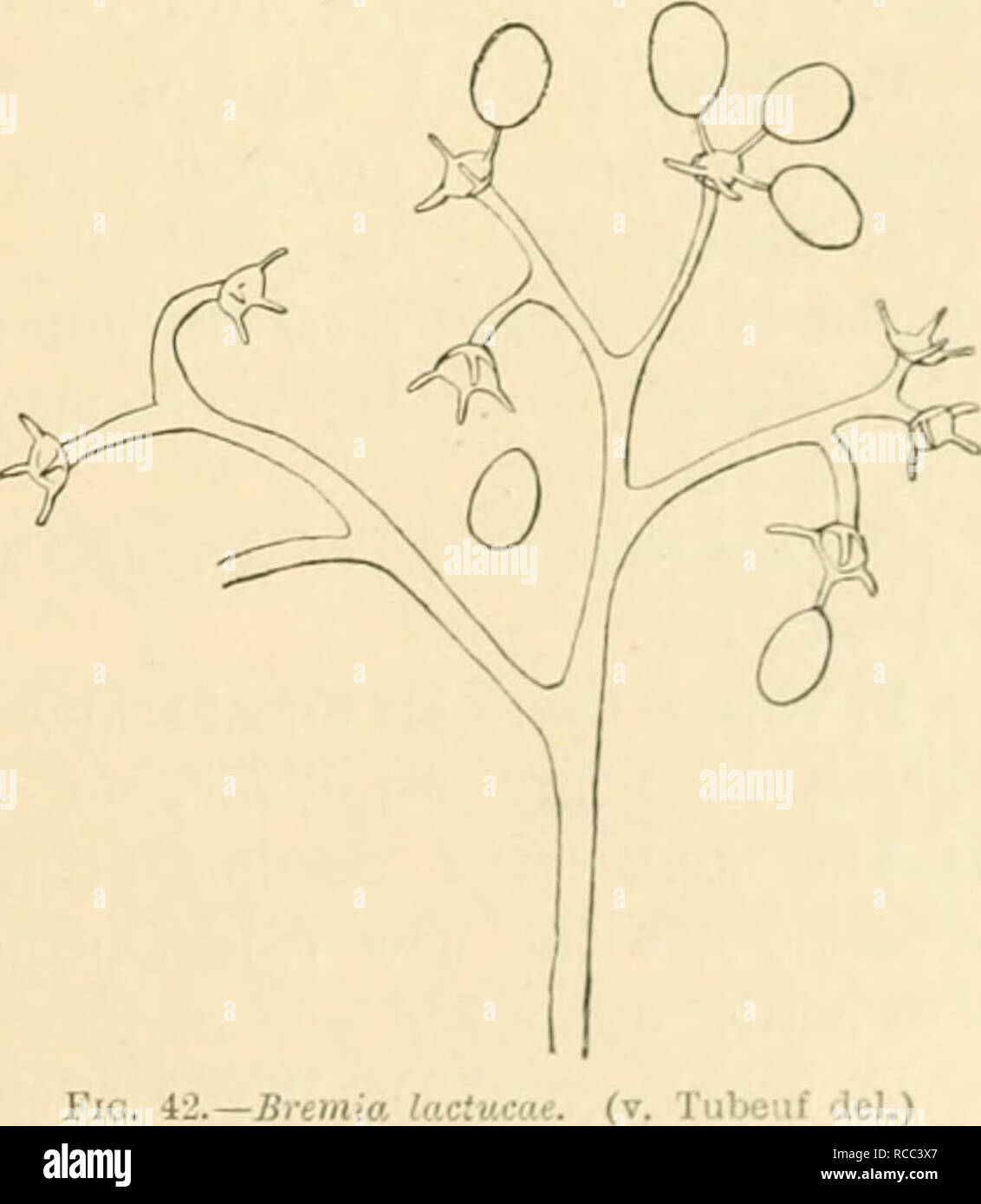. Diseases of plants induced by cryptogamic parasites; introduction to the study of pathogenic Fungi, slime-Fungi, bacteria, & Algae. Plant diseases; Parasitic plants; Fungi. PLASMOPARA. 131 PI. viburni, Pec-k. Oii Vibicrnum (U.S. America). PI. densa (Rabh.). On Scrophularineae (Britain). PI. ribicola (St-hroet.). On Ribes rubrum (U.S. America). PI. epilobii (Rabh.). On Epilobium palustre, and E. parvifoUiim. PI. obducens (Schroet.). On cotyledons of Impatiens (U.S. America). PI. g-eranii (Peck.). On Geraniums in America. PI. Halstedii, Berl. and de Toni. On Silphmm, Rudbeckia, Ilelianthus

Image details
Contributor:
Paul Fearn / Alamy Stock PhotoImage ID:
RCC3X7File size:
7.1 MB (123.3 KB Compressed download)Releases:
Model - no | Property - noDo I need a release?Dimensions:
1475 x 1693 px | 25 x 28.7 cm | 9.8 x 11.3 inches | 150dpiMore information:
This image is a public domain image, which means either that copyright has expired in the image or the copyright holder has waived their copyright. Alamy charges you a fee for access to the high resolution copy of the image.
This image could have imperfections as it’s either historical or reportage.
. Diseases of plants induced by cryptogamic parasites; introduction to the study of pathogenic Fungi, slime-Fungi, bacteria, & Algae. Plant diseases; Parasitic plants; Fungi. PLASMOPARA. 131 PI. viburni, Pec-k. Oii Vibicrnum (U.S. America). PI. densa (Rabh.). On Scrophularineae (Britain). PI. ribicola (St-hroet.). On Ribes rubrum (U.S. America). PI. epilobii (Rabh.). On Epilobium palustre, and E. parvifoUiim. PI. obducens (Schroet.). On cotyledons of Impatiens (U.S. America). PI. g-eranii (Peck.). On Geraniums in America. PI. Halstedii, Berl. and de Toni. On Silphmm, Rudbeckia, Ilelianthus, and many other American Compositae. Sclerospora. Mycelium intercellular in living plant-tissues, and deriving nourishment by means of liaustoria. The conidiophores are thick, short, and divide at their apices into short broad Ijrauches, from each of which a single conidium is abjointed. The conidia in germinating discharge swarming cells. One oospore is formed in each oogonium. Sclerospora graminicola (Sacc.) lives in several species of Sctaria (U.S. America). Bremia. Mycelium intercellular in higlH^r ])lants, and nourished Ijy little button-like haustoria. The conidiophores are branched, and at their apical ends become swollen in a char- acteristic manner, so as to resemble a hand held cup- like with the fingers project- ing separately upwards, like the tentacles of Hydra. The conidia are alijointed singly from the tentacle-like pro- cesses, and germinate, emit- ting a germ-tube through a definite thin spot in their coat. Oospores originate singly in oogonia. Bremia lactucae, Keg. (PciVii0.y)o/'(( (jiinfjlioniformis lierk.^) (Jkitain and U.S. America). The richly-branched conidio- phores appear singly on attacked parts of plants. Tliis fungus ^Cornu, Compt. rend., 1S7S.. Please note that these images are extracted from scanned page images that may have been digitally enhanced for readability - coloration and appearance of these illustrations may not perfectly resemble the or